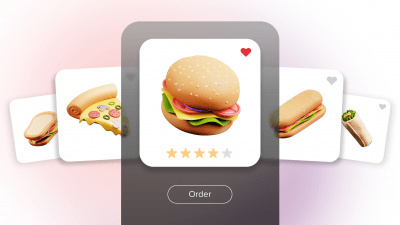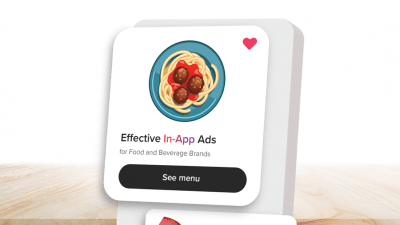Last Updated on: 2nd February 2024, 12:36 pm
Modern advertising is powered by Artificial Intelligence and advanced analytics, which allows marketers to provide more relevant content to potential customers. However, just two decades ago, marketers had no such advantage. So what is programmatic advertising, where did it come from, and how does it work?
In this article, you will learn about:
- How we went from manually negotiated banner ads to the sophisticated programmatic advertising technologies we use today.
- How we went from a simple network of ad servers to the Google-powered advertising giants we see today.
- How programmatic advertising and the technology behind it works, and how they have helped shape the advertising space.
- The advantages and disadvantages of different approaches, including how you can offload some of the tricky stuff to expert third parties.
Table of Contents:
- What is programmatic advertising?
- The origins of programmatic advertising
- How does programmatic advertising work?
- What are programmatic advertising platforms?
- What are the latest programmatic advertising trends?
- What are the benefits of programmatic advertising?
- Programmatic advertising challenges and solutions
- Can in-house teams handle programmatic advertising?
What is programmatic advertising?
Programmatic advertising is an automated system that oversees the transactions involved with buying and placing ads on either a desktop or mobile website or an app. Unlike traditional advertising methods that involve manual negotiations and purchases, programmatic advertising relies on advanced algorithms and Artificial Intelligence to make real-time decisions about where to place ads. This streamlined process allows advertisers to target specific audiences more effectively, ensuring that their ads reach the right people at the right time.
In simpler terms, programmatic advertising uses technology to make the ad-buying process faster, more efficient, precisely measurable, and highly targeted. Advertisers can set parameters such as demographics, interests, and online behavior, and the system automatically places their ads on websites and platforms that align with these criteria. Acting as an efficient real-time buying and selling platform of ad space, programmatic advertising uses algorithmic software and real-time data to drive impressions. This results in a high ROI for marketers by ensuring that ads are specifically targeted and placed in the right locations at the right time.
This kind of solution is enormously complicated and the result of hundreds of small technological advances, which ultimately lead to the comprehensive ad-buying solutions we use today. Imagine it as a blend of real-time bidding, smart algorithms, and clever data analysis. These elements work together to create the ad-buying tools we have today, making it easier for advertisers to connect with the right audience.
Programmatic advertising’s strength lies in its ability to quickly process lots of data, helping advertisers make smart choices about which users to show their ads to, and where to show them. With ongoing improvements, it has become a sophisticated system that not only makes buying ads more straightforward, but also ensures digital campaigns have a big impact.
The origins of programmatic advertising
Before programmatic advertising, negotiations for buying digital ads were a manual, time-consuming process, and advertising itself was expensive. The oldest “ancestor” of the modern digital ad is generally considered to be a well-known static banner ad introduced to the advertising market by HotWired (presently Wired.com).
In 1994, it was something new and even a little intriguing for users – at least intriguing enough to score an impressive CTR of 40-50%. In those early days of advertising, users were exposed to far less advertising content. As the number of adverts users saw increased, the average CTR began to creep closer to the levels we see today.
The first signs of programmatic ads appeared just two years later. In 1996, the first ad server – Double Click – was created (and bought by Google 11 years later), and, in time, new servers were built, and the first network for advertising started to take shape. This began in 2000 when Google AdWords (now known as Google Ads) was released. However, we didn’t see programmatic ads until 2013, when Google AdSense was released.
One of the key developments in programmatic advertising was the introduction of real-time bidding (RTB). RTB allowed advertisers to bid for ad impressions in real time, enabling them to reach specific audiences based on user data. This shift from traditional, manual ad buying to an automated, auction-based system marked the early stages of programmatic advertising.
Advertisers and marketers embraced this new approach for its ability to streamline processes, enhance targeting precision, and provide valuable real-time insights into campaign performance. However, we didn’t see programmatic ads until 2013, when Google AdSense was released. Google, driven forward by its popular search engine, began to transform the advertising space and caused the rise in the number of programmatic advertising platforms.
How does programmatic advertising work?
Programmatic advertising leverages automation, algorithms, and real-time bidding to make the ad-buying process more efficient and targeted. It’s a dynamic approach that allows advertisers to connect with their desired audience with precision, delivering personalized messages across a variety of digital channels. Here’s a breakdown of how the process works:
- Data Collection: Advertisers gather data from various sources, including user preferences, demographics, and browsing history. This data helps create detailed user profiles and identifies specific audience segments.
- Auction-Based Buying: Advertisers use demand-side platforms (DSPs) to establish their criteria and preferences, including the target audience, ad format, and budget. Then these DSPs engage in real-time auctions for ad impressions across various platforms.
- Real-Time Bidding (RTB): When a user visits a website or app, available ad spaces are put up for auction in real time. Advertisers bid on these ad spaces based on their targeting criteria, and the highest bidder wins the opportunity to display their ad.
- Ad Exchange: Ad exchanges facilitate the real-time auction process. They connect advertisers with available ad spaces, enabling the seamless buying and selling of digital ad inventory. We also collaborate with direct publishers, enabling them to monetize their ad spaces directly.
- Ad Delivery: Once an auction is won, the chosen ad is instantly delivered and displayed to the user on the website or app they are visiting. This entire process happens in a fraction of a second.
- Real-Time Optimization: Programmatic platforms continuously analyze the performance of ad campaigns in real time. Advertisers can adjust their bidding strategies and creative elements on the fly to maximize the effectiveness of their campaigns.
- Data Insights: Programmatic advertising generates valuable data insights. Advertisers can access analytics on user engagement, click-through rates, and other key metrics. This data informs future campaigns and marketing strategies.
What are programmatic advertising platforms?
Programmatic Advertising Platforms have seen significant advancements thanks to automated technology. SSP (Sell-Side Platform), DSP (Demand-Side Platform), and ad exchanges are all integral components of the programmatic advertising ecosystem, each playing a distinct role in the buying and selling of digital ad inventory. Let’s take a closer look at how they work:
- Sell-Side Platforms (SSPs): Also referred to as “supply-side platforms,” SSPs enable publishers to manage and sell their ad impressions to advertisers in real time. The primary goal of an SSP is to maximize the revenue for publishers by connecting their available inventory with advertisers willing to bid on it. Examples of major players: Google Ad Manager, Amazon Publisher Services, Google AdMob.
- Demand-Side Platforms (DSPs): Advertisers use DSPs to purchase ad inventory across multiple platforms simultaneously. They may connect with ad exchanges to access available ad space and participate in real-time bidding. The main goal of a DSP is to efficiently and strategically purchase ad impressions that align with an advertiser’s target audience and campaign goals. Examples of major players: Google Display & Video 360, Amazon DSP, Adobe Advertising Cloud DSP, and RTB House.
- Ad Exchangers: These facilitate the flow of ad inventory from SSPs to DSPs. DSPs connect to ad exchangers, where ad prices fluctuate based on inventory competitiveness. The primary objective of ad exchangers is to ensure a fair and competitive environment where ad space is allocated to the advertiser willing to pay the highest price in real-time. Examples of major players: Google Ad Exchange, Microsoft Xandr, Verizon Media.
- Header Bidding: specifically Prebid, involves a direct integration with a publisher’s inventory, allowing advertisers to competitively bid for ad placements in the header of a website, maximizing the value of the ad inventory. Bid requests are sent to multiple demand partners in real time, enhancing auction efficiency and ensuring optimal revenue for the publisher.
It is important to note that DSPs and SSPs fulfil similar functions, but for different user bases. These platforms complement each other by bringing advertisers and publishers together and allowing them to work together. The users of both programmatic advertising platforms ultimately have the same goal – increasing the efficiency of their advertising activities. DSPs cater to marketers and advertisers seeking maximum impact and control over their ads, while SSPs are designed for publishers aiming to sell ads at the best prices to the demand side.
To learn more about programmatic advertising platforms, check out our article on DSP vs. SSP.
How do programmatic advertising platforms work?
The programmatic advertising platform was born with the advent of the Google Ads suite. These tools automate how marketers and advertisers control the purchase of ads and manage digital campaigns—seamlessly linking publishers and marketers globally. The rise of these platforms, particularly AdSense, provided alternative revenue streams for publishers, ultimately enabling the advertising-supported internet we know today. This also created some challenges – suddenly, Google had to contend with enormous amounts of SPAM sites, etc. Before Google’s Panda Update for search optimization, the first RTB (real-time bidding) solutions were designed and built in the first decade of the 21st century. From that moment on, advertising companies started to follow the general tendency in business to become more data-driven and automated.
As automation methods became increasingly sophisticated, brands could advertise more effectively. These automation methods also lowered the barrier to entry for RTB companies, leading to an arms race as these new companies worked to develop better tools to maximize the value of programmatic advertising platforms.
As more and more companies entered the space, this competition had the unfortunate side effect of increasing customer acquisition costs compared to historical levels, which only increased the importance of using the right tech.
What are the latest programmatic advertising trends?
The ad-buying market is still undergoing a significant transformation. Companies that understand how to apply new innovations correctly will have a considerable advantage over their slower-moving competitors. Over the next ten years, there will be some significant opportunities for forward-thinking advertisers.
The best example of these changes is the elimination of third-party cookies. Third-party cookies have been a central component of the advertising industry for over 25 years, but privacy concerns have led Google to make the decision to depreciate them by Q3 2024. This will require advertisers to adopt novel approaches to improve the overall outcomes.
General process automation drives efficiency
Automation has become a key tool for improving efficiency, particularly in the marketing and advertising space. Aside from the general savings from eliminating the need to negotiate for adverts manually, automated systems require companies to create standardized processes and datasets, creating valuable datasets that can be used to improve further.
This data can then be fed into advanced algorithms, like RTB House’s Deep Learning solutions, that can find unique insights that can be used to target users better. The loss of third-party cookies will significantly alter the make-up of the data used. More advanced algorithms will have a significant advantage over legacy solutions built for cookie-based targeting.
Contextual targeting services availability
Another key tool in the cookieless future is contextual targeting. This solution allows advertisers to place ads with a publisher based on their audience’s predicted interests and can rely entirely on first-party data.
Video advertising
In 2022, 82% of the traffic on the internet was by video. Customers are increasingly consuming video rather than written content. This means that OTT ads should be a central part of any brand’s strategy. Programmatic video advertising enables brands to select shows with the right demographic for their product and directly show them content when they are most engaged.
What are the benefits of programmatic advertising?
- Enhanced Targeting: Programmatic advertising surpasses traditional static banners, offering more sophisticated targeting options. With the use of cookies and advanced algorithms, advertisers can precisely target specific audiences based on demographics, behaviors, and interests.
- Automation Efficiency: The shift to programmatic means machines and algorithms take the reins in the ad-buying process, simplifying and streamlining the entire procedure. Automation saves time and resources compared to the manual methods of the past.
- Utilization of AI: Programmatic advertising leverages Artificial Intelligence to refine targeting techniques. Thanks to AI and Deep Learning-powered solutions, organizations can optimize their visibility among potential customers.
- Advanced Advertising Techniques: Companies can employ advanced advertising techniques, such as contextual targeting, to tailor messages to specific contexts or environments. This flexibility allows for more nuanced and personalized approaches to engage diverse audience segments.
- Measurable Ad Performance: Programmatic platforms offer robust analytics tools, enabling companies to measure the performance of their ads comprehensively. Access to real-time data facilitates quick assessments, empowering advertisers to make informed decisions and adjustments to their campaigns on the fly.
Check out our article on the benefits of programmatic advertising to learn more.
Programmatic advertising challenges and solutions
While programmatic advertising offers numerous benefits, it also comes with its own set of challenges. Here are some common challenges associated with programmatic advertising:
- Ad Fraud: Ad fraud remains a significant concern in programmatic advertising. Unscrupulous entities may use various techniques to generate fake impressions or clicks, leading to wasted ad spend.
Solution: Google is actively working on ways to battle bots, reducing the risk of fraud. Advertisers should publish on reputable websites and cooperate with publishers and networks they know and trust.
- Quality of Inventory: The quality of available ad inventory can vary, impacting the effectiveness of campaigns. Advertisers may struggle to find premium inventory that aligns with their brand values and target audience.
Solution: Most DSPs want your ads to reach your target audience, but it’s important to work with a trusted partner who offers high-quality inventory and ensures your ads get placed in the most relevant places.
- Transparency Concerns: lack of transparency in the programmatic supply chain is a common issue. Advertisers may face challenges in understanding where their ads are being placed and whether they are reaching the intended audience.
Solution: Work towards adopting industry standards like Ads.txt, demand clear reporting from partners, and embrace emerging technologies to ensure a more accountable and trustworthy digital advertising ecosystem.
- Brand Safety: Ensuring that ads appear in safe and appropriate environments is crucial. Programmatic advertising increases the risk of ads being displayed alongside controversial or inappropriate content, potentially harming a brand’s reputation.
Solution: Partner with DSPs that guarantee brand safety as a feature of their platform. At RTB House, we leverage Deep-Learning powered natural language processing (NLP) to block harmful impressions and protect our clients while maintaining an appropriate level of reach.
Can in-house teams handle programmatic advertising?
The answer depends on the brand’s digital investments, maturity, and capabilities. Managing an advertising campaign can be challenging for small or less experienced organizations. You need proper tools, resources, and knowledge. In many cases, working with an external organization specializing in programmatic advertising techniques is more effective.
Specialized advertising partners, like RTB House, have more efficient technologies and methodologies and often access to a wider pool of resources than you could build in-house. By working with them, you can leverage these resources to access the best advertising opportunities.
If you want to discover how you can leverage our expertise to make the most of the latest techniques, please get in touch.





